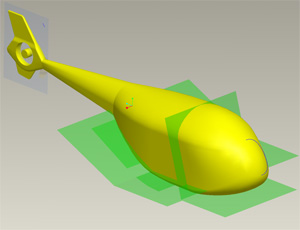HI, I am trying to model a huey fugelage but the nose is so hard to do. The revolve may not work because the nose is flat on the bottom and round on top. I sketch the profile section and save it as .sec so I can do the blend but it still comes out strange. here is what I did but not even close. I don't have the dimensions and just eyeball by my understanding.








